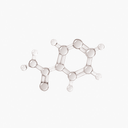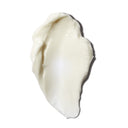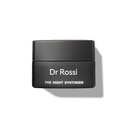

Clinically proven to reduce hyperpigmentation.
Experience significant improvement of facial hyperpigmentation like melasma, age spots, and dark spots that may develop from horomonal changes, inflammation, scarring, acne and sun exposure.
Dermatologist
developed
anti-inflammatory
skincare


ask dr. rossi
What causes the appearance of aging?
The appearance of aging on the face is caused by chronic inflammation and environmental stress, like UV exposure and heat, that break down collagen and elastin over time. These triggers activate the TRPV1 receptor in the skin, leading to visible signs of aging such as fine lines and wrinkles, dullness, and loss of firmness.
Users in our medical grade trials noticed significant improvement in the appearance of aging in just 4 weeks:
- 87% Agree Skin Feels More Supple and Elastic
- 87% Agree Skin Feels Healthier and Energized
- Up to 100% Smoother Skin
How do you treat the visible signs of aging in the skin?
My Bio-Theriac® Complex is formulated interrupt the inflammation aging cycle. By calming this cycle, the complex helps preserve the skin’s structural integrity, visibly improving firmness, texture, and fine lines.
What is Bio-Theriac® Complex and how does it help treat the signs of aging?
Bio-Theriac® Complex is my science-backed solution to target inflammation, one of the root causes of visible aging. By blocking the TRPV1 receptor, an internal signal that breaks down collagen over time, Bio-Theriac® Complex helps reduce fine lines, improve firmness, and smooth skin texture.

Niacinamide
With its strong antioxidant capabilities, this multi-functional active is brimming with skin benefits that help minimize the visible signs of aging such as fine lines and wrinkles.

Biomimetic Sea Anemone Venom Peptide
This first-of-its-kind peptide helps calm hyper-reactivity and irritation, which can be caused by external environmental factors as well as imbalances in the TRPV1 receptor.

Hyaluronic acid
This first-of-its-kind peptide helps calm hyper-reactivity and irritation, which can be caused by external environmental factors as well as imbalances in the TRPV1 receptor.









